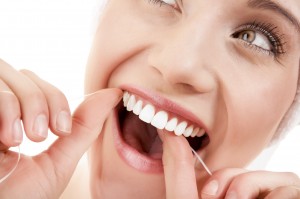 While it is common for most people to brush their teeth at least once a day as part of their oral hygiene regimen, many people fail to realize that flossing their teeth is just as important as brushing. Flossing is the process of using a thin, floss silk thread to remove food particles and plaque from the spaces between one’s teeth. Flossing helps prevent plaque build-up, gum disease and tooth loss. When a person visits the General Dentists in St Louis for a routine dental checkup, they will typically receive a gift bag containing dental floss, along with toothpaste and a new toothbrush.
While it is common for most people to brush their teeth at least once a day as part of their oral hygiene regimen, many people fail to realize that flossing their teeth is just as important as brushing. Flossing is the process of using a thin, floss silk thread to remove food particles and plaque from the spaces between one’s teeth. Flossing helps prevent plaque build-up, gum disease and tooth loss. When a person visits the General Dentists in St Louis for a routine dental checkup, they will typically receive a gift bag containing dental floss, along with toothpaste and a new toothbrush.
However, just because a patient receives free dental floss from a General Dentist in St Louis, it does not mean they will ask the dentist for a tutorial on how to use it! In the event, however, a patient suddenly becomes curious about how to use that “wax-covered string” in their complimentary gift bag, they won’t have to wait until their next checkup with the General Dentists in St Louis to learn how; instead, they can implement the following flossing technique as part of their daily oral care routine.
To begin, the patient will pull approximately 18 inches of dental floss from its dispenser, and wind each end of the floss around the middle finger of each hand. There should be two to three inches of clean floss for him to start with. The patient must pinch the two to three inch string between his index finger and thumb, gliding it back and forth between his teeth toward the gum line. Once at the gum line, the patient must curve the floss around the tooth and gently glide it back and forth slightly below the gum line.
Before proceeding to the next set of teeth, the patient must unwind two to three inches of floss from his middle fingers to release a clean piece of floss. Using clean floss in each space prevents bacteria, food particles, and plaque residue from being redeposited into the mouth. The patient will floss all upper and lower teeth working in a clockwise direction, taking care not to rip the floss as this could scratch his gums.
It is best for the patient to floss before brushing to ensure that plaque and food particles have been thoroughly removed from between his teeth and along the gum line. This will ensure that these particles are completely brushed away and rinsed out of the patient’s mouth. As the patient combines flossing with brushing on a daily basis, he can significantly reduce the incidence of periodontal disease, tooth decay, and tooth loss.
These tips were brought to you buy a general dentist St. Louis.

